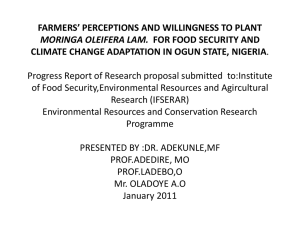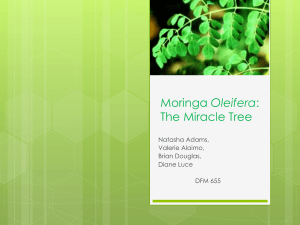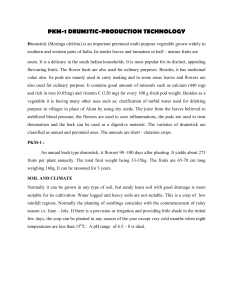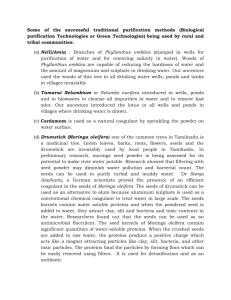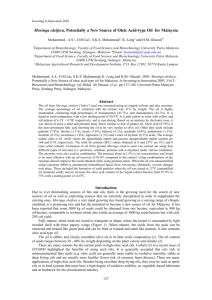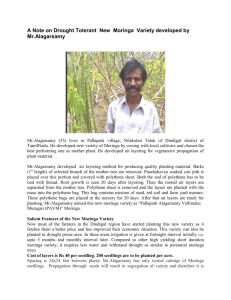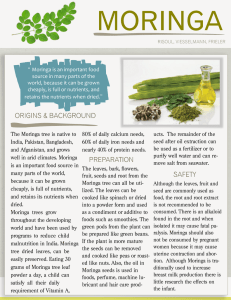EXTRACTION OF MORINGA OIL
advertisement
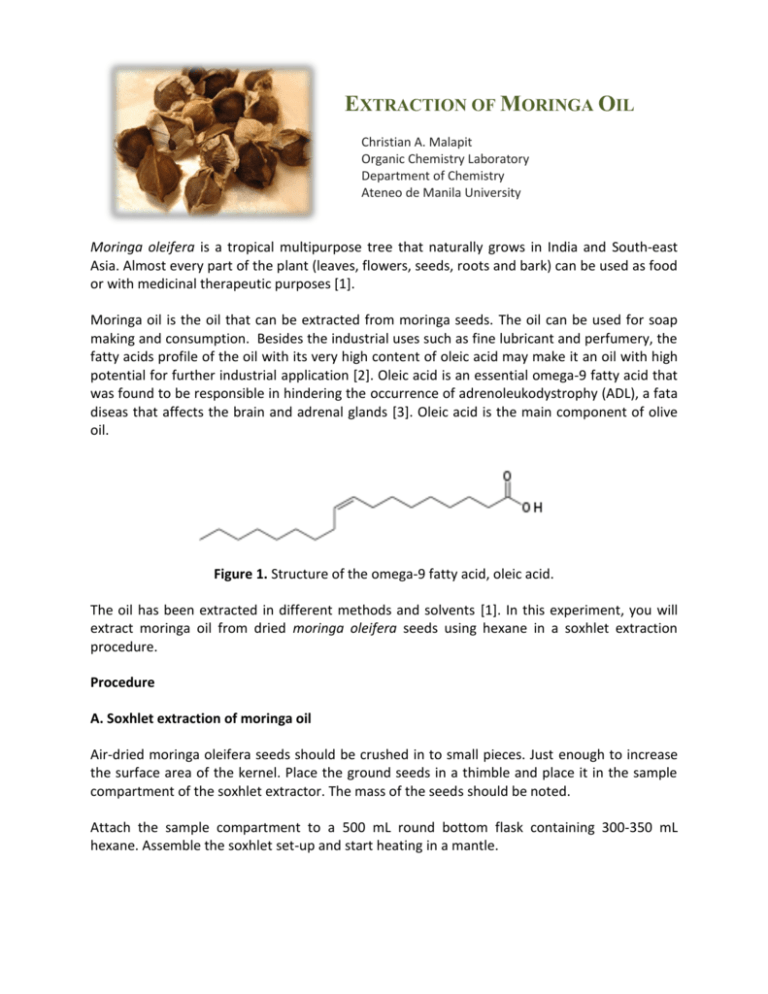
EXTRACTION OF MORINGA OIL Christian A. Malapit Organic Chemistry Laboratory Department of Chemistry Ateneo de Manila University Moringa oleifera is a tropical multipurpose tree that naturally grows in India and South-east Asia. Almost every part of the plant (leaves, flowers, seeds, roots and bark) can be used as food or with medicinal therapeutic purposes [1]. Moringa oil is the oil that can be extracted from moringa seeds. The oil can be used for soap making and consumption. Besides the industrial uses such as fine lubricant and perfumery, the fatty acids profile of the oil with its very high content of oleic acid may make it an oil with high potential for further industrial application [2]. Oleic acid is an essential omega-9 fatty acid that was found to be responsible in hindering the occurrence of adrenoleukodystrophy (ADL), a fata diseas that affects the brain and adrenal glands [3]. Oleic acid is the main component of olive oil. Figure 1. Structure of the omega-9 fatty acid, oleic acid. The oil has been extracted in different methods and solvents [1]. In this experiment, you will extract moringa oil from dried moringa oleifera seeds using hexane in a soxhlet extraction procedure. Procedure A. Soxhlet extraction of moringa oil Air-dried moringa oleifera seeds should be crushed in to small pieces. Just enough to increase the surface area of the kernel. Place the ground seeds in a thimble and place it in the sample compartment of the soxhlet extractor. The mass of the seeds should be noted. Attach the sample compartment to a 500 mL round bottom flask containing 300-350 mL hexane. Assemble the soxhlet set-up and start heating in a mantle. Let the soxhlet extraction run for 2-3 hours. Distill out the hexane solvent in the oil extract by distillation or rotary evaporation. Distillation should be done in low flame. Wash the mixture with 15 mL cold saturated NaCl solution for 2 to 3 times. Collect the upper layer and dry it over anhydrous sodium sulfate. B. Yield and qualitative tests Determine the yield by taking the mass of the oil extract over the mass of the starting seeds. Likewise, determine the density and the pH of the oil using a pH paper. Oleic acid is a mono-unsaturated fatty acid. The presence of double bond in the oleic acid can be tested by its reaction with bromine. In a test tube, add 5-10 drops of dilute bromine in CH2Cl2. Note the color of the solution. Add few drops of the oil until the discoloration of bromine is observed. References [1] Mani, S., Jaya, S. and Vadivambal, R. (2008). Optimization of solvent extraction of moringa (Moringa Oleifera) seed kernel oil using response surface methodology. [2] Machell K., 1994 Report on the Extraction of Moringa oil from Moringa oil seeds. Intermediate Technolgy Zimbabwe, Harare, Zimbabwe. [3] Adrenoleukodystrophy: oleic acid lowers fibroblast saturated C22-26 fatty acids. National Center for Biotechnology Information. 1986-03-03.

